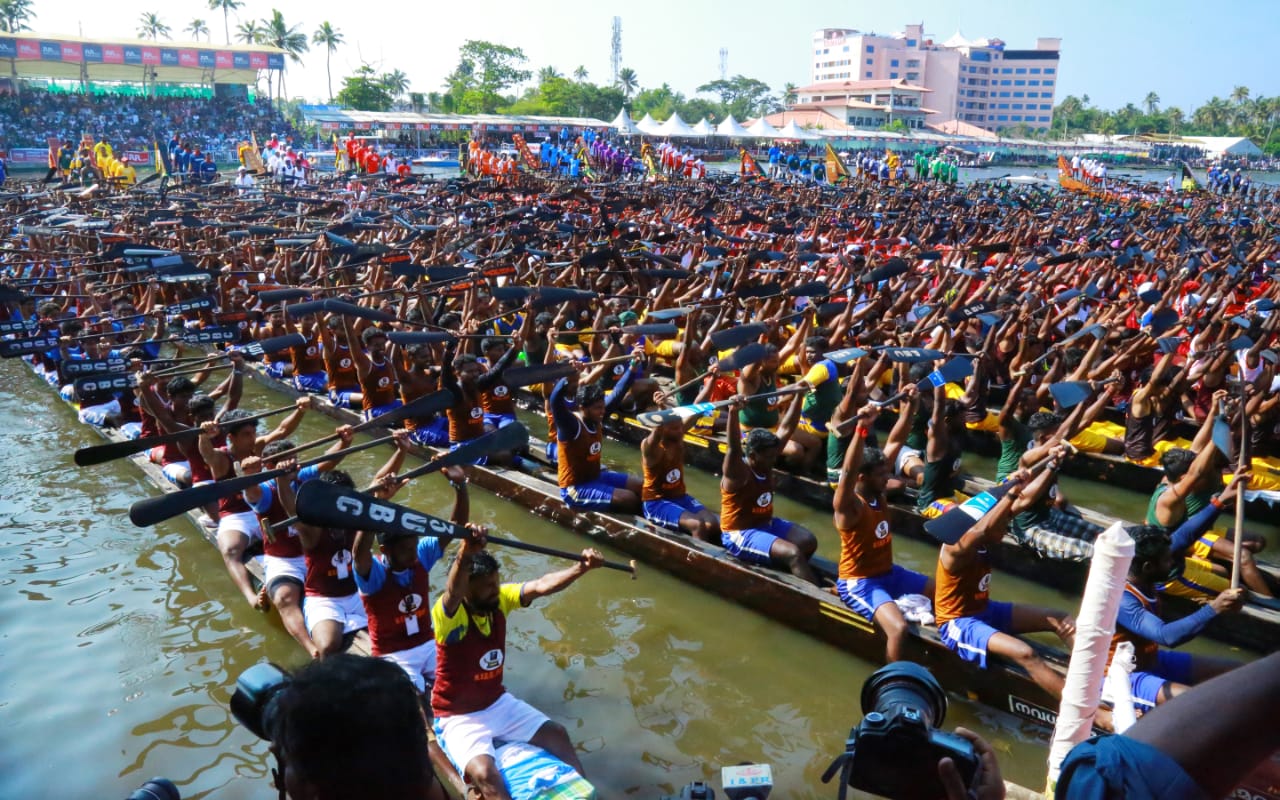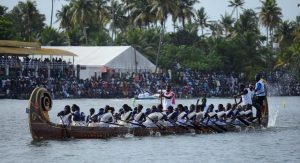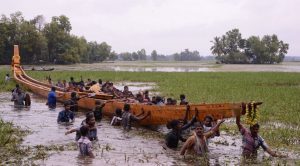Pinarayi Vijayan's invitation to Union Home Minister Amit Shah to watch the Kerala snake boat race is already an issue for the Opposition.

A view of the Nehru trophy boat race held in 2019 (Supplied)
Kerala Chief Minister Pinarayi Vijayan’s invitation to Union Home Minister Amit Shah to be the chief guest at the state’s most colourful water sports event — named after India’s first prime minister Jawaharlal Nehru — evoked large-scale angry responses.
How much could a Nehruvian legacy hurt a Left-leaning chief minister who — the Opposition says — is soft on right-wingers?
Though the Nehru Trophy snake boat race, scheduled for 4 September in the Punnamada backwaters of the Alappuzha district, has turned out to be the most significant annual tourism event of Kerala, attracting fanciers from across the globe in recent years, the credit for bringing the then little-known practice to the world outside goes to Nehru, who visited Kerala in 1952 for the first time as the prime minister of independent India.
Cut to the present day, and Opposition parties like the Congress and different secular organisations have been highly critical of Vijayan’s choice of Shah — a key Sangh Parivar leader accused of insulting and neglecting Nehru the most — as chief guest of an event that is being held after a gap of three years due to the Covid-19 pandemic.
While the ruling Left Democratic Front (LDF) in Kerala claims there was nothing extraordinary in the invitation, it may be noted that Shah — as Union home minister — would already be in the state’s capital Thiruvananthapuram a day before the boat race, having been invited — along with all the chief ministers and lieutenant governors — to attend the 30th Southern Zonal Council meeting.
The government claimed the chief ministers of South Indian states represent different political parties, and no partisan politics are involved in the invitation.
However, Opposition leader VD Satheesan said the development was a reflection of an existing bonhomie between the chief minister and BJP, apart from efforts to convince the Union government that the LDF did not prefer an aggressive stand. He also alleged that the investigations pending against the chief minister contributed to the development.
According to senior Congress leader M Liju, a highly-decorated snake boat was arranged for Nehru’s travel from Kottayam to Alappuzha. The first prime minister was quite impressed by the arrangement. He was also moved by the vast welcome accorded to him by the natives of the backwater regions of Alappuzha when the boat moved around.
A friendly snake boat competition was held in his honour. On his return to Delhi, Nehru gifted a silver trophy — which came to be known as the “Prime Minister’s Trophy” — to the winners of the boat race. The following year, the Prime Minister’s Trophy boat race evolved into an annual event, attracting many from in and outside India. After Nehru’s death, the event was rechristened the Nehru Trophy Boat Race.

While only men are traditionally allowed to take part in the Kerala snake boat races, women have started the handle the oars in recent times. (Nehru Trophy Boat Race official website)
The Nehru Trophy Boat race is conducted in the first week of September every year. Foreign and domestic tourists flock to Alappuzha in considerable numbers at that time.
Champakulam Moolam Boat Race, Payippad Jalotsavam, and Aranmula Uthrattadi Vallamkali are some of the other snake boat races which evolved over the years taking inspiration from the Nehru Trophy. About 100-138 feet in length, these snake boats have rear parts usually rising to a height of 20 feet with an extended tapering front portion.
Traditionally, each snake boat belongs to a particular village from the Kuttanad region in Alappuzha. As far as the villagers are concerned, the boats are worshipped as divine. Only men are permitted to operate them.
According to A Vinod, a permanent presence in the snake boat races in Alappuzha for the last two decades, there is a renewed enthusiasm this year in the organising of the event because of the gap created by the coronavirus pandemic, and he hopes political controversies would not affect its smooth conducting.
“From the 2018 Kerala deluge, the pandemic to rough-weather conditions, many things affected even the morale of attending team members. We have high hopes this time. And we wish to retain the racing competition as a memorial to Nehru,” he said.
At least 25 snake boats and 56 small boats will likely be a part of this year’s extravaganza. While each snake boat carries more than 150 participants, the smaller ones will carry 40-50 people each.

The Kerala snake boat is considered one of the most prominent sporting vessels in the world. (Nehru Trophy Boat Race official website)
According to local MLA PP Chitharanjan, the snake boats got their name because they seem to move like snakes in Alappuzha’s brackish backwaters at lightning speed. Now deemed as one of the most prominent sports vessels in the world, these boats carry a rich legacy and a set of popular myths, according to him.
One such myth that traces the origin of the snake boat races is about an old Hindu joint family named Kattoor Mana, whose members were extreme devotees of Lord Krishna. The family used to feed the poor after completing rituals in their temple close to the backwaters.
On a particular day, no poor person reached the temple seeking food. The family members became worried and had no option but to share their anxiety with Lord Krishna. Once they completed the prayers, a small boy arrived at the scene seeking food, and disappeared soon after, having relished the delicacies.
Legends say the disappeared child was visible at the Aranmula Sri Krishna Temple, located a little way away, for some time and then allowed himself to be absorbed into the image of the deity. Only then did the family realise the boy was an incarnation of Lord Krishna himself. The family took food to the temple each year using long snake-shaped boats to invoke the memory.
Whatever the myth, local historians say the snake boats started occupying the backwaters of Alappuzha early in the 14th century at the behest of King Devanarayana of Chembakassery.
Those snake boats were 100-120 feet long, and carried people and war equipment. Strong woods were used for making the boats, and the preference was always for a local word named Anjili. The intention was always to carry the maximum weight.
“There is a responsibility for secular formations in Kerala to keep the Nehruvian legacy related to the snake boat competition. Short-term political gains must not be the aim while deciding on its conduct,” said Dr Azad, a social activist and writer from Kozhikode.

Apr 29, 2024

Apr 28, 2024

Apr 28, 2024

Apr 28, 2024

Apr 28, 2024

Apr 28, 2024